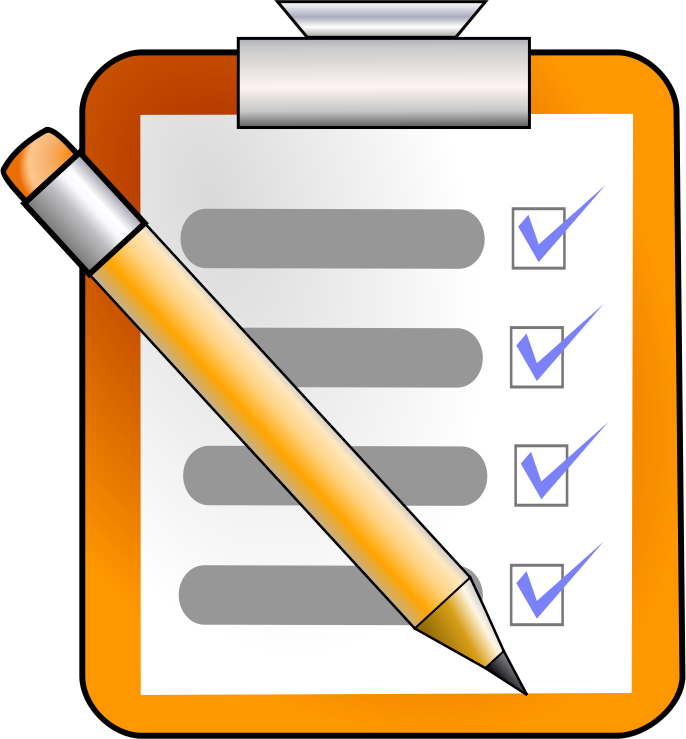
Do you ever find yourself trying to sleep and your mind just. won’t. turn. off? It is terribly frustrating, and it prevents you from sleeping.
The List.

Sometimes we can’t sleep because we are worrying about the tasks we need to complete tomorrow. I don’t know about you, but I’ve allowed myself to lose sleep over this way more than I am proud of.
What happens is, you go to bed and remember something you can’t afford to forget for tomorrow. You tell yourself, “don’t forget.” You keep this thought in your mind. So much so, that even while you sleep, you think, “don’t forget.” You keep this in the forefront of your mind instead of letting all thoughts and cares drift away.
Because of this, you won’t get the deeper levels of sleep needed to be restorative. You may wake up remembering what you didn’t want to forget, but you will also wake up feeling tired, and unrested.
Instead, let me recommend The List. Before bed, write down everything you need to remember for the next day. Put the list somewhere where you definitely see it (like by your keys). Now you don’t have to worry about forgetting what you need to remember. In fact, you are free TO forget it. It’s written down, waiting for you in the morning.
So what happens if you remember something else after you’ve laid down in your bed? Get up. Write it on the list. This slight interruption right before bed will have a much less damaging effect on your sleep than you trying to remember something all night.
If you find yourself having to get up multiple times to add to the list, consider keeping it near your bed. Then you don’t even need to get up to add to it.
The main point is you need to be able to dismiss your worries and cares so you can relax your brain, and sleep.
The Box.

The List works great for specific things you need to remember. But what about those times when you are concerned about general things that are not specifically time bound. For example, your finances.
Sure, a List item might be pay the electric bill tomorrow. But if your finances are strained, and you are doing what you can to get by, that burden weighs on you whether a specific bill is due or not.
Like the List, The Box is a way for you to clear your mind. It takes a little practice to get this to work, so don’t get discouraged if it doesn’t work for you right away. Here is how it works.
Imagine a shoebox. Put all the cares and worries you have in this imaginary box. Using the example above, place your finance worries in this box. Now put the lid on. Open up a closet door in your mind, and put the box on the top shelf in the back of the closet. Now shut the door.
The worries are still there, safe and sound in the box, but you are free to forget about it. Let those concerns go. There is nothing productive you can do at night to affect those worries anyway, so you might as well (temporarily) forget about them, and get some quality sleep. (Quality sleep will also equip you to better face these worries).
In the morning, you are then free to take that box down, open it, and pick your worries back up.
I do want to be clear, I’m not asking you to repress your thoughts, bury your concerns, or shirk your responsibilities. What I want is for you to allow yourself to put these worries down for the night.
The main point is you need to be able to dismiss your worries and cares so you can relax your brain, and sleep.
Relaxation.

Now that you are working on releasing your mind from distracting thoughts, it is time to relax your mind, as well as your body.
I am going to share with you the exact relaxation exercise I have used with clients for over a decade. It’s nothing fancy, but it works. I hope to have an audio version you can download and listen to at bedtime sometime soon. (Stay tuned for that). You can listen to it, or download it here.
What I have my clients do is find a comfortable place to sit or lay down. I ask that they do this a few times a day when possible. However, if you only do it at bedtime, that is fine too. In your bed would then be the comfortable place.
I will ask my clients to lie down and close their eyes. I then will ask them to take a deep breath in and then hold it. While they are holding their breath, I want them to focus on the physical stress and tension in the particular body part I mention. I will then ask them to exhale. When they exhale, they are to also breathe out that stress and tension and frustration, and allow that body part to relax.
The deep breath in should take at least 2 seconds, the hold should be at least 3 seconds, and the release (exhale) should be at least 3.
I systematically go down the different parts of the body, asking them to breathe in, focus on all the stress and tension in their [body part], and then breathe out that stress and tension. I also bookend the exercise with a deep breath in, hold, and exhale without focusing on tension.
Here is what it looks like:
Deep breath in. Hold. Breath out.
Deep breath in. Hold. Focus on the stress and tension in your forehead. Breathe out that stress and tension.
Deep breath in. Hold. Focus on the stress and tension in your jaw. Breathe out…
…Neck…
…Shoulders…
…Chest…
Stomach
Arms, hands and fingers
Pelvis
Upper legs (thighs)
Lower legs (calves)
Feet, toes.
Spine
Deep breath in. Hold. Focus on any remaining stress and tension in your body. Breathe out that stress and tension.
Deep breath in. Hold. Breath out.
Even just reading that, aren’t you feeling more relaxed?
This exercise was not originally intended to put you to sleep. It was for people to manage their stress. You remember I recommended clients to try this a few times a day? One of those times, I said to do it in bed before going to sleep.
A majority of my clients reported falling asleep shortly afterwards, and some of them didn’t even make it all the way through before falling asleep. Due to this, I started recommending it specifically for people to try to sleep better.
Certainly, this is not the end-all, be-all when it comes to relaxation exercises. There are different ones out there that a simple Google search would reveal. Others find meditation to be more effective. Find what works best for you and stick with it.
So, as a quick recap:
- Clear your mind from the things that trouble you. Use the List or the Box methods, or both.
- Relax your body and mind using relaxation or mediation techniques.
Happy Zzz’s…
